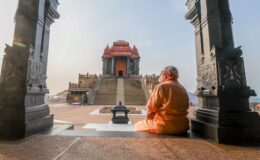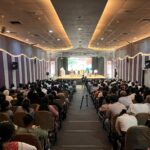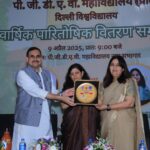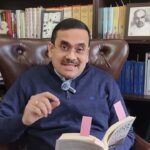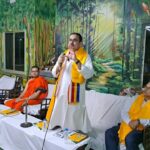FOCUS ON OUR REVOLUTIONARY PAST
- By : Anirban Ganguly
- Category : Articles

By bringing back the likes of Shyamji Krishna Verma, Raja Mahendra Pratap, Muhammad Barkatullah, Veer Savarkar and Netaji Subhas Chandra Bose into the national discourse, Narendra Modi is unshackling the forgotten revolutionary movement for Indian independence
When he returned with the ashes of revolutionary nationalist Shyamji Krishna Verma and interred it in the soil of his birthplace at Mandvi in Kutch and built over it a grand memorial as a tribute to this foremost among the originators of the Indian revolutionary movement abroad, Prime Minister Narendra Modi, then Chief Minister of Gujarat, was clearly asserting and bringing back to active memory the long lost contributions of a class of patriots who have faded from our national conscience.
When he got Krishna Verma’s reinstatement certificate in London this November and handed it over to the Government in Gujarat, Prime Minister Modi completed a full circuit. He has also laid down a path following which the nation and its present and future leaders may consider paying a living tribute to those unsung and marginalised revolutionaries who had carelessly thrown away their lives in order to liberate the essential spirit of India and its civilisational aspirations.
Similarly Mr Modi’s reference to Raja Mahendra Pratap and Muhammed Barkatullah, while addressing the Afghan Parliament, was also symbolic of how at least a section in India has begun to celebrate and recognise the contributions of those who believed in an alternate path to achieving India’s freedom and adopted other means and ways to articulate the aspirations of that freedom. Such an approach may announce the start of a phase which shall gradually see the rediscovery of a large number of such revolutionary nationalists and the reinstatement of their contributions in their respective regions and in the country as a whole.
Prime Minister Modi’s visit, during in his Canada trip, to the Komagata Maru museum; his obeisance, literally on bended knees, to Netaji Subhash Chandra Bose’s 99-year-old Japanese aid Saichiro Misumi, in Tokyo last year; and his tribute to the Indian National Army memorial in Singapore this November — a first by an Indian Prime Minister; and his warm welcome and intense engagement with a section of Netaji’s family members who wished to meet him and urged him to take the initiative for the declassification of the Netaji files; his meeting with Netaji’s grandnephew Surya Bose in Berlin, during a very hectic Germany tour; and his assurance that the Netaji files shall be put through the process of declassification unequivocally indicate not only a deeper solidarity with and recognition of India’s revolutionary past but also his own commitment to bringing to current light and preserving for posterity the contributions of this phase and of those who defined and directed it against great odds.
For six decades the ruling Congress and its eco-system of lackeys have only served to keep the Netaji disappearance pot boiling with Left Front constituent parties like the Forward Bloc, despite its professed sincerity in trying to unravel the Netaji disappearance mystery, repeatedly failing to pressurise any progress in the process. Even as a major constituent of the Left Front then supporting UPAI, the Forward Bloc could hardly do much to try and generate pressure to declassify the Netaji files. The communists were, of course, silent; having showered their choicest expletives on Netaji once upon a time, it served their purpose to put a lid on his contribution in the shaping of modern Indian aspirations.
While the Congress, adept at devising and enacting a miasma like drama on the episode, only brought in divisions in the quest for Netaji — while liberally patronising and encouraging a section to push the line that the Taihoku crash was the finale, it marginalised those scholars or members of the Netaji family who carried out genuine and often difficult research, and called for a dispassionate enquiry into the episode involving multiple Governments and newly declassified files in foreign archives, as well as access to those documents that still remained out of bounds for scholars and historians. The resistance to the unravelling of the complete story of Netaji’s disappearance is a reflection of the Congress and especially its dynasty worshippers’ intense loathe for any other icon or member who had once commanded a greater allegiance of the Indian masses than Nehru ever did, and may again serve to strengthen the efforts of an alternate narrative.
To those who have been habituated to worshiping a single political dynasty and its members, these acts of reinstatement and rediscovery appear incomprehensible, reprehensible and worthy of criticism. For those failed intellectuals and historians, who have only worked to deconstruct civilisational India throughout their lives, subsisting and running shop on money doled out by the official agency for historical research of the Government of India and who even now use the platform of the Indian History Congress to peddle their long-discarded historiographical theories and frameworks and hyena or mongrel like snipe at the Prime Minister of India, such a fascinating acceptance of our revolutionary past, as displayed by Mr Modi, is worthy of disdain and rejection.
Their only fascination remains, and has always been, the evolution of a tactical line which will help them decided whether the revolutionaries were perpetrating a bourgeois line or the line of the masses which would spearhead a movement for the liberation of the masses. The regular reflux of such indigestible revolutionary jargons has made the history of India, as perpetuated by card-carrying communist ideologues, a narrative of negation and false interpretations.
A section among our political class has always worked to negate the contributions of these revolutionaries and blanket these various phases or minimise their impact. In extreme displays of intolerance, these one-family worshipping acolytes have often tried to erase and oppose any attempt to institute historical commemoration and memories.
One such intellectually barbaric act was when Veer Savarkar’s commemorative plaque was pulled down by a dynasty-acolyte trying to whitewash and erase Savarkar’s unparalleled contribution to India’s freedom and his acute suffering at Cellular Jail. So preoccupied was this section with its day-to-day political survival that 2009 passed off without a commemoration of the centenary of the first batch of political prisoners who were deported to the then forbidden Andaman & Nicobar Islands following the Alipore Bomb Trial.
That neglect seems to be gradually reversing, if only we have the will to discern and tenacity to build on it. As Mr Modi once observed, “there is no need to strangle history” and “nations that forget their history lack the power to create it”. His strides to un-strangle our history have been rapid and decisive, those who have worked to strangle it all this while are the ones who oppose it most and find fault with it. One of the greatest achievements of 2015 has in fact been this step towards unshackling India’s revolutionary past.



